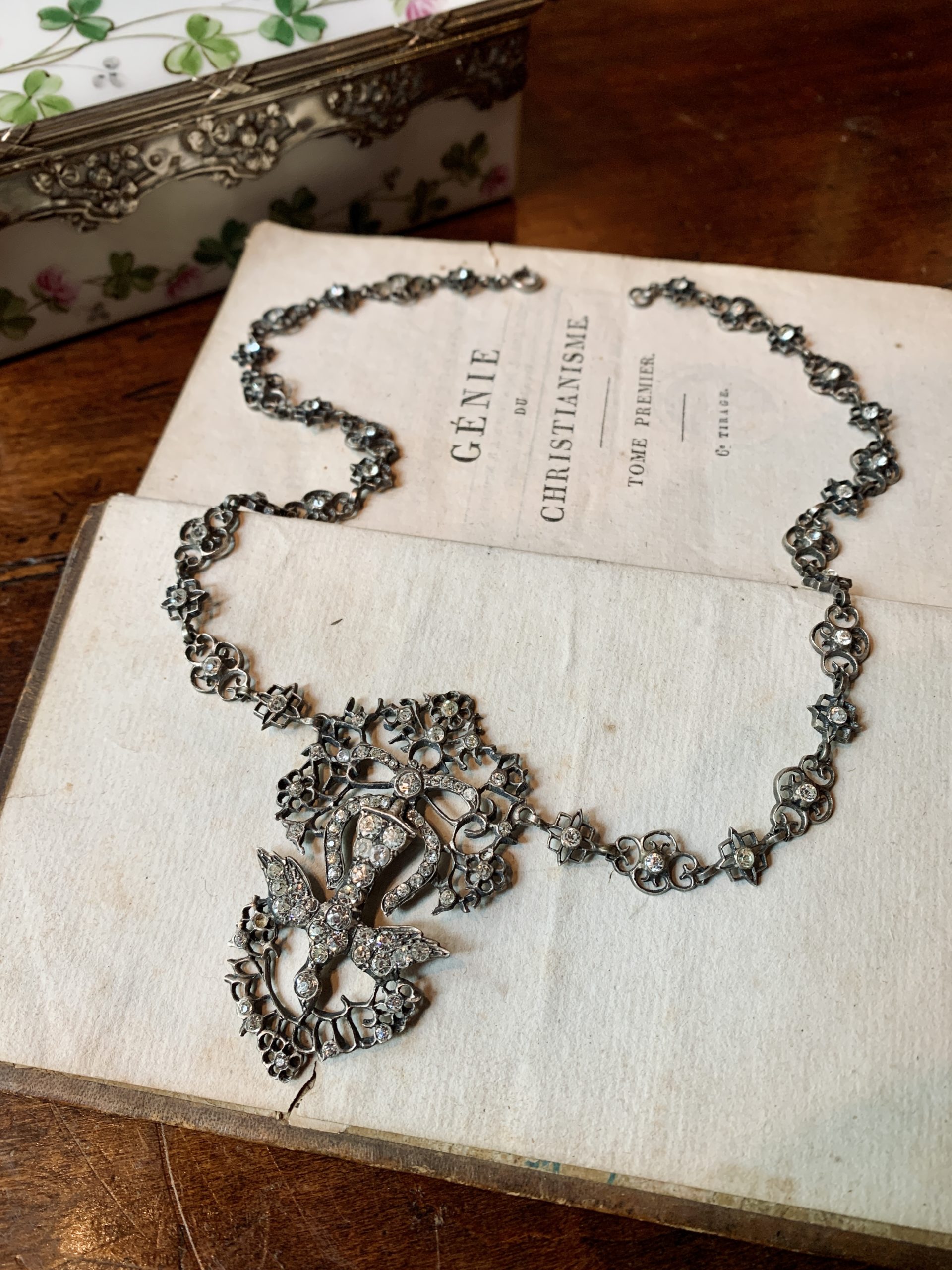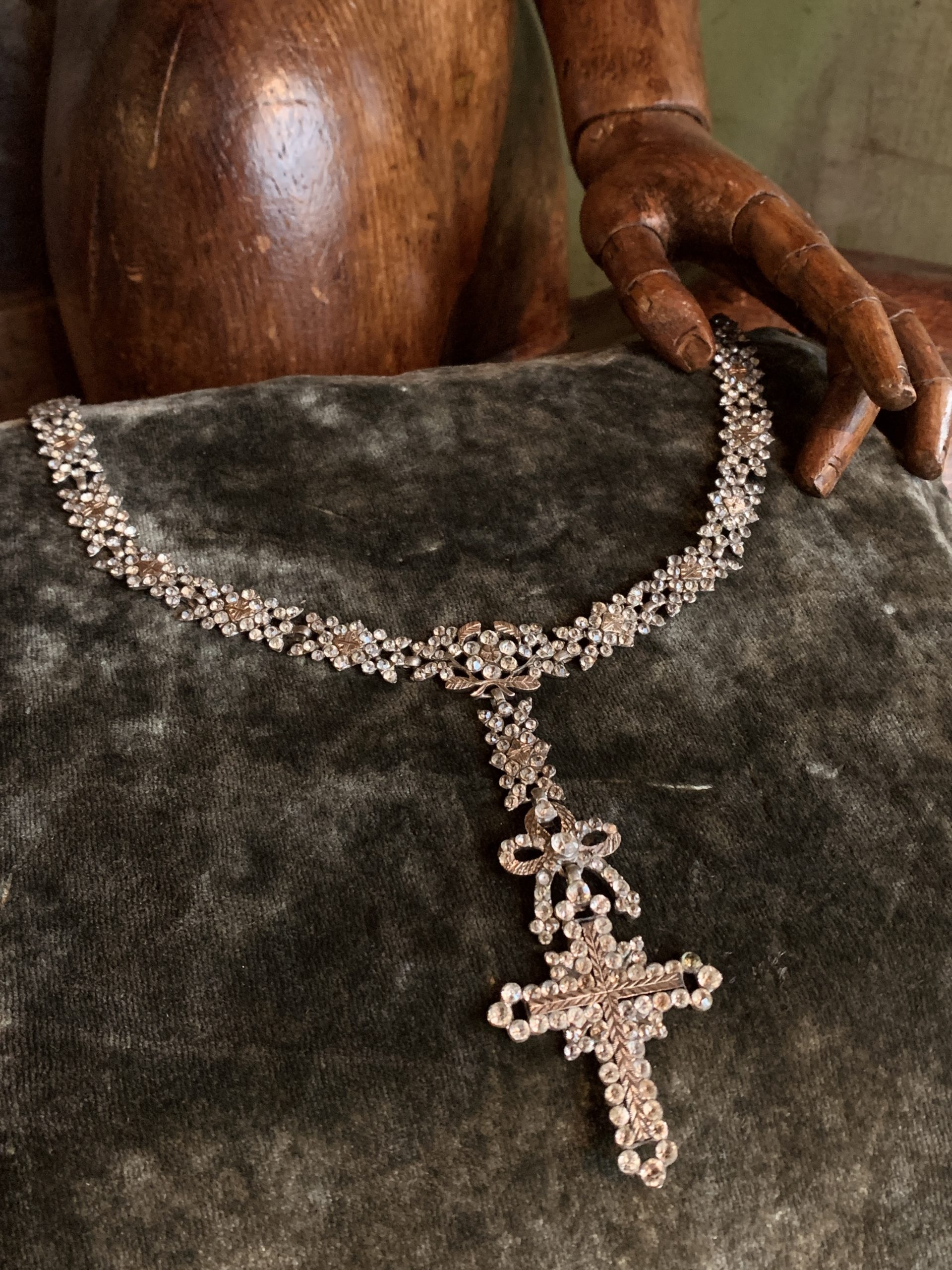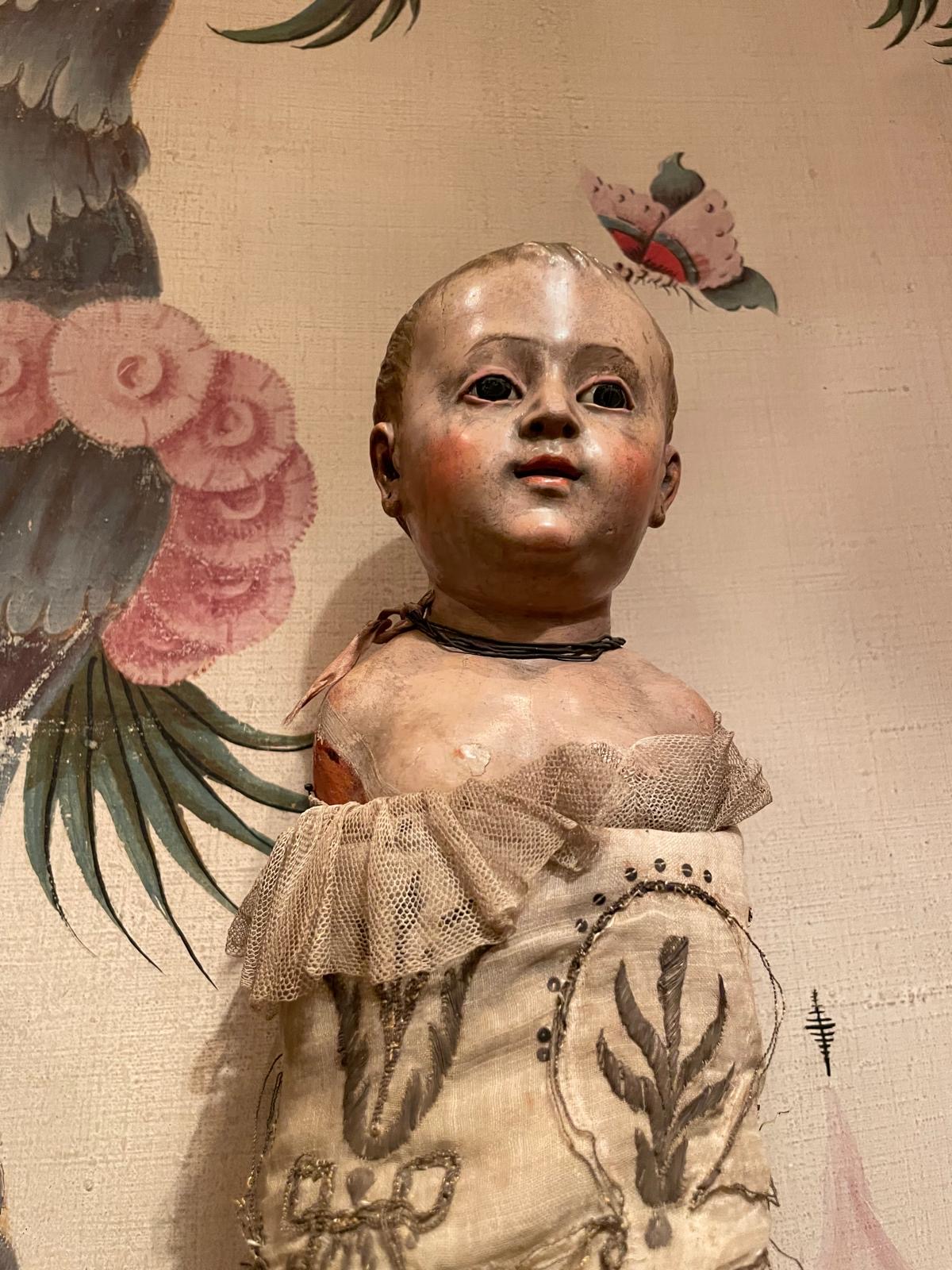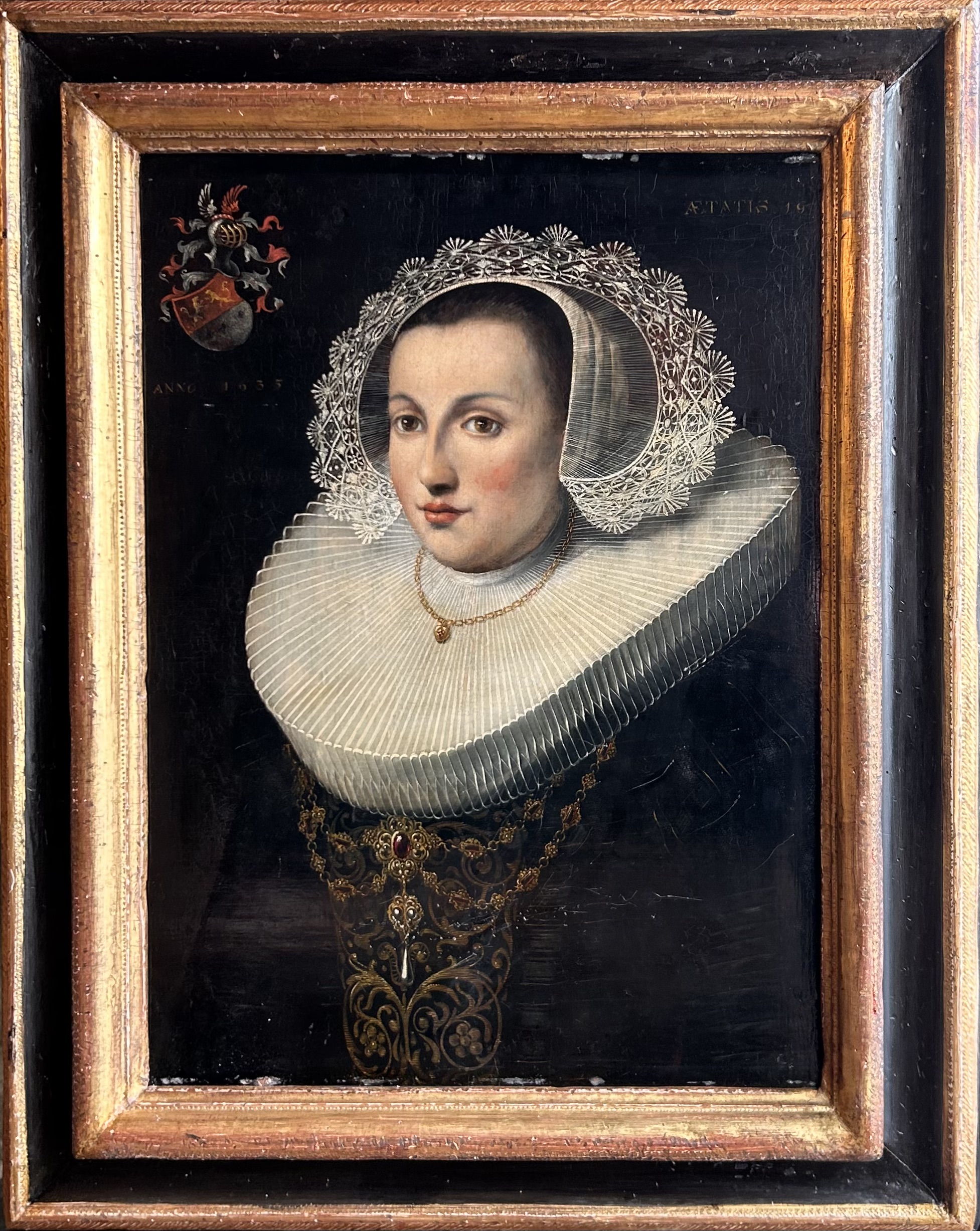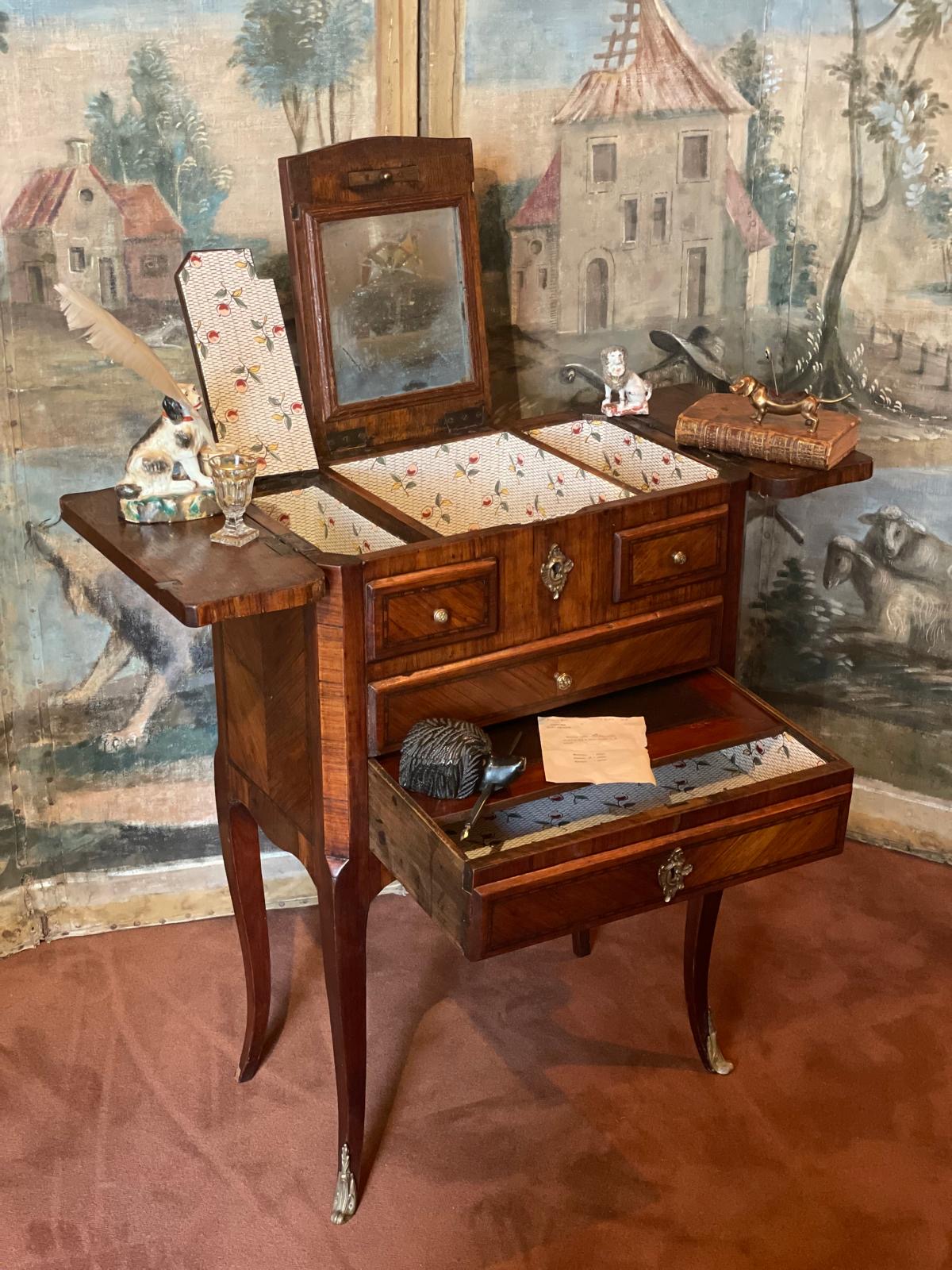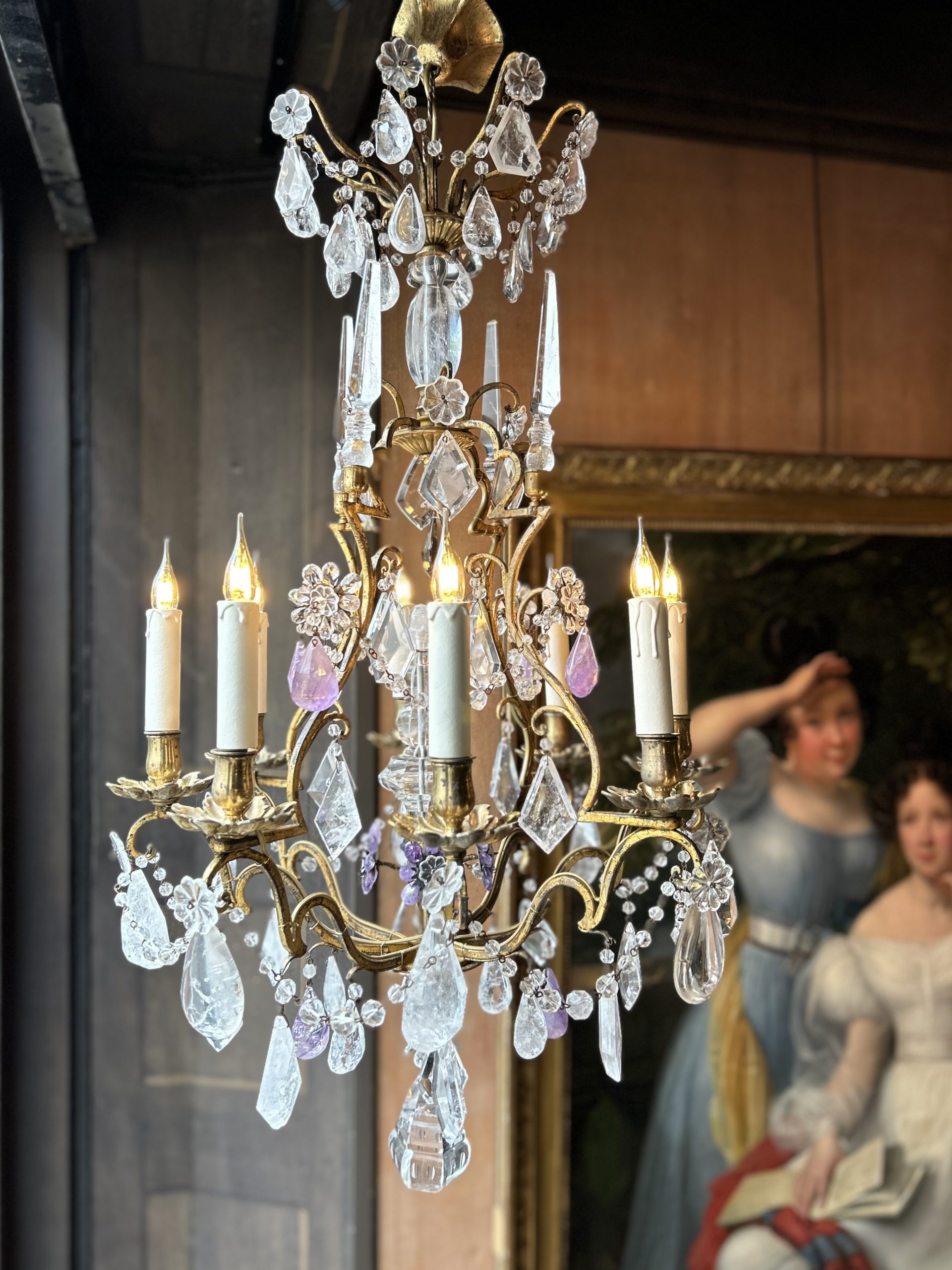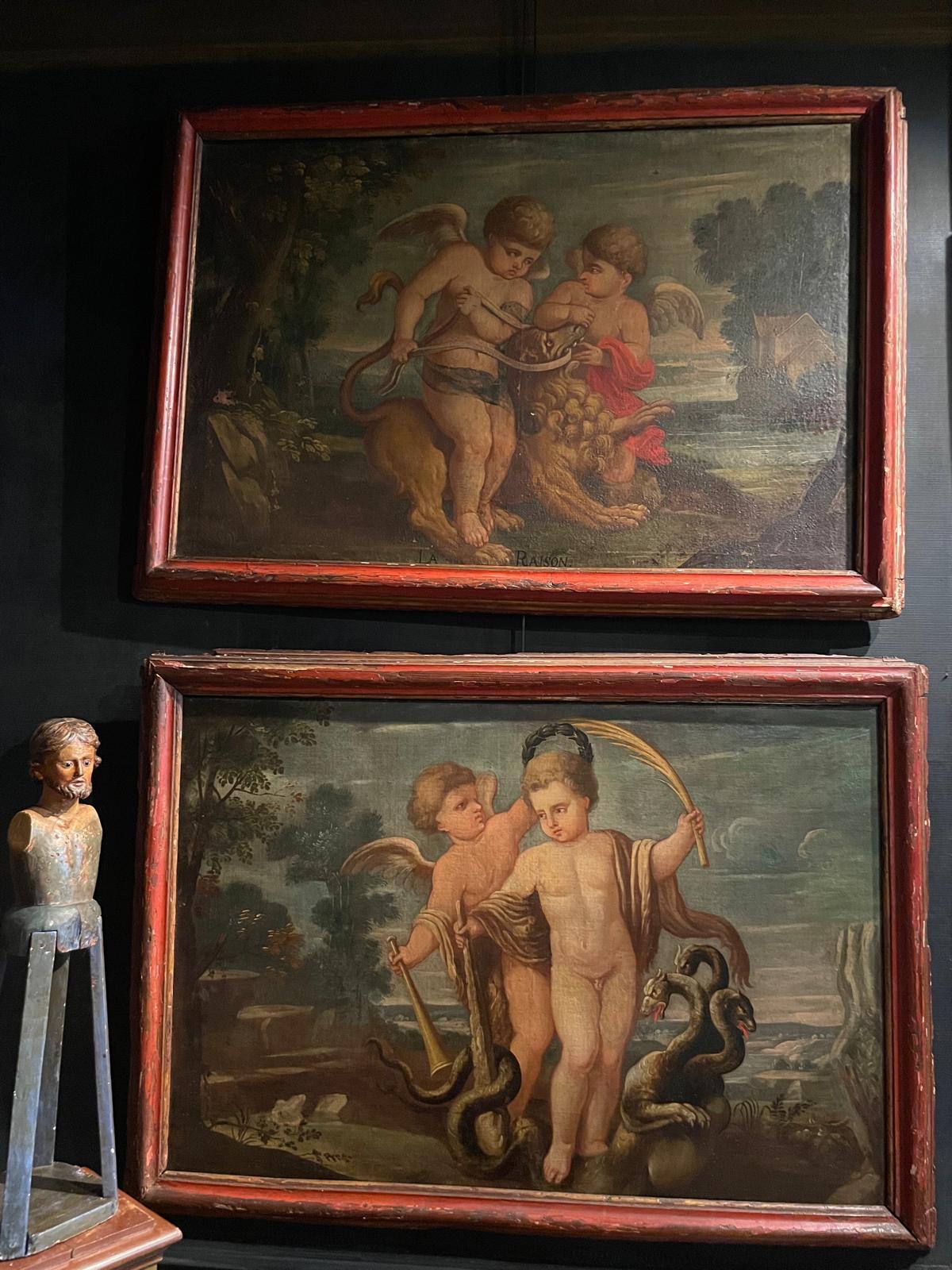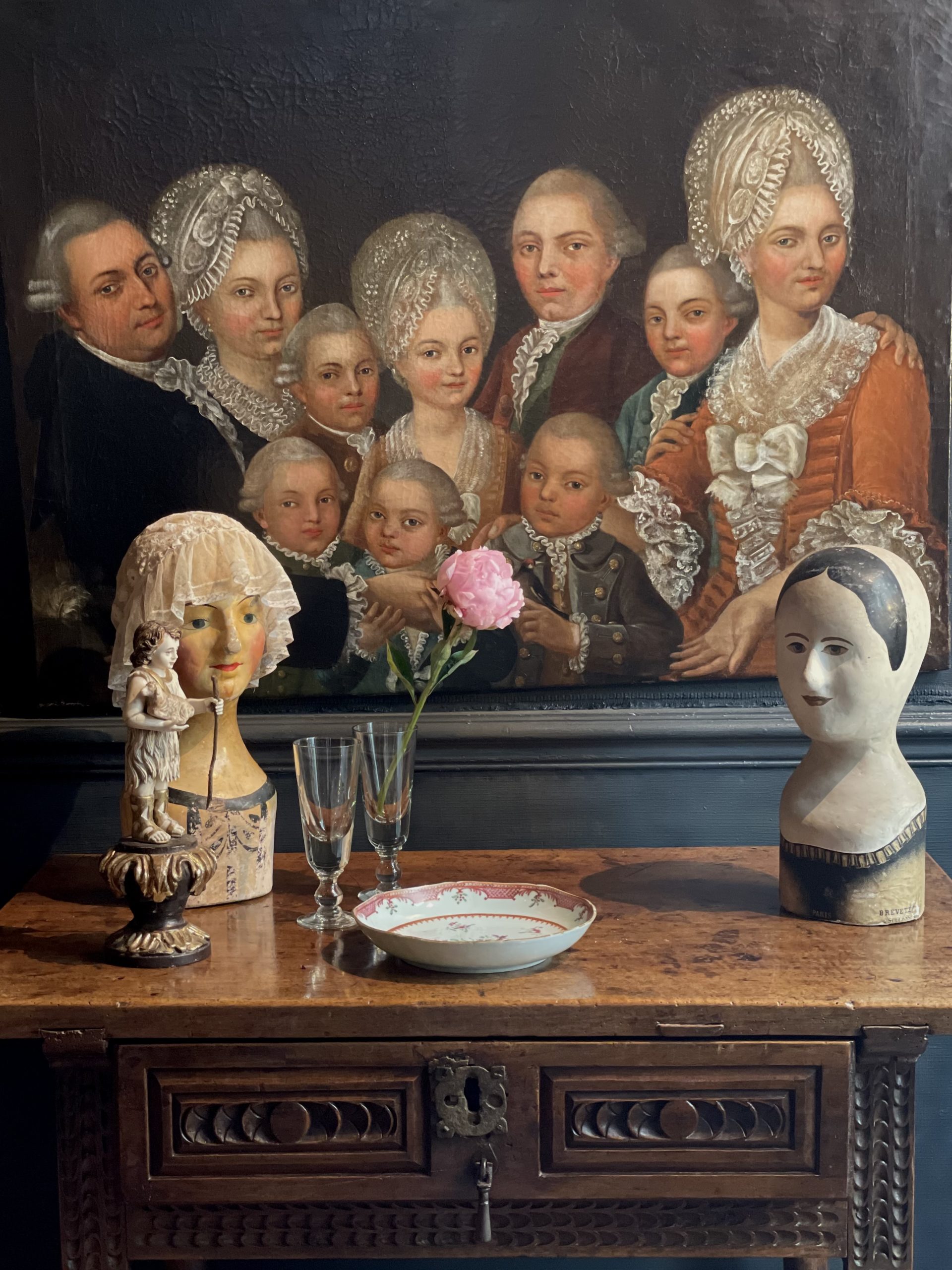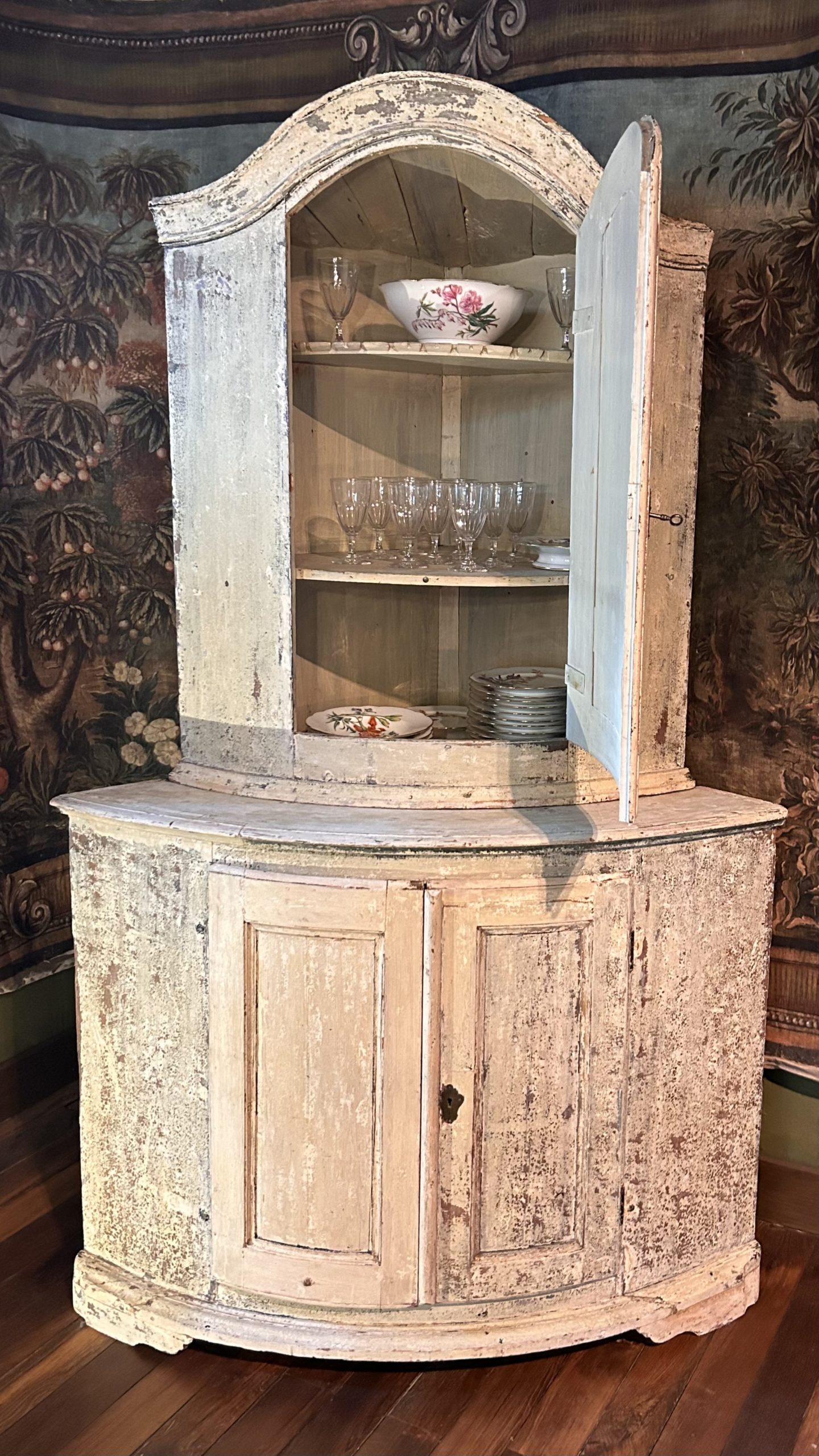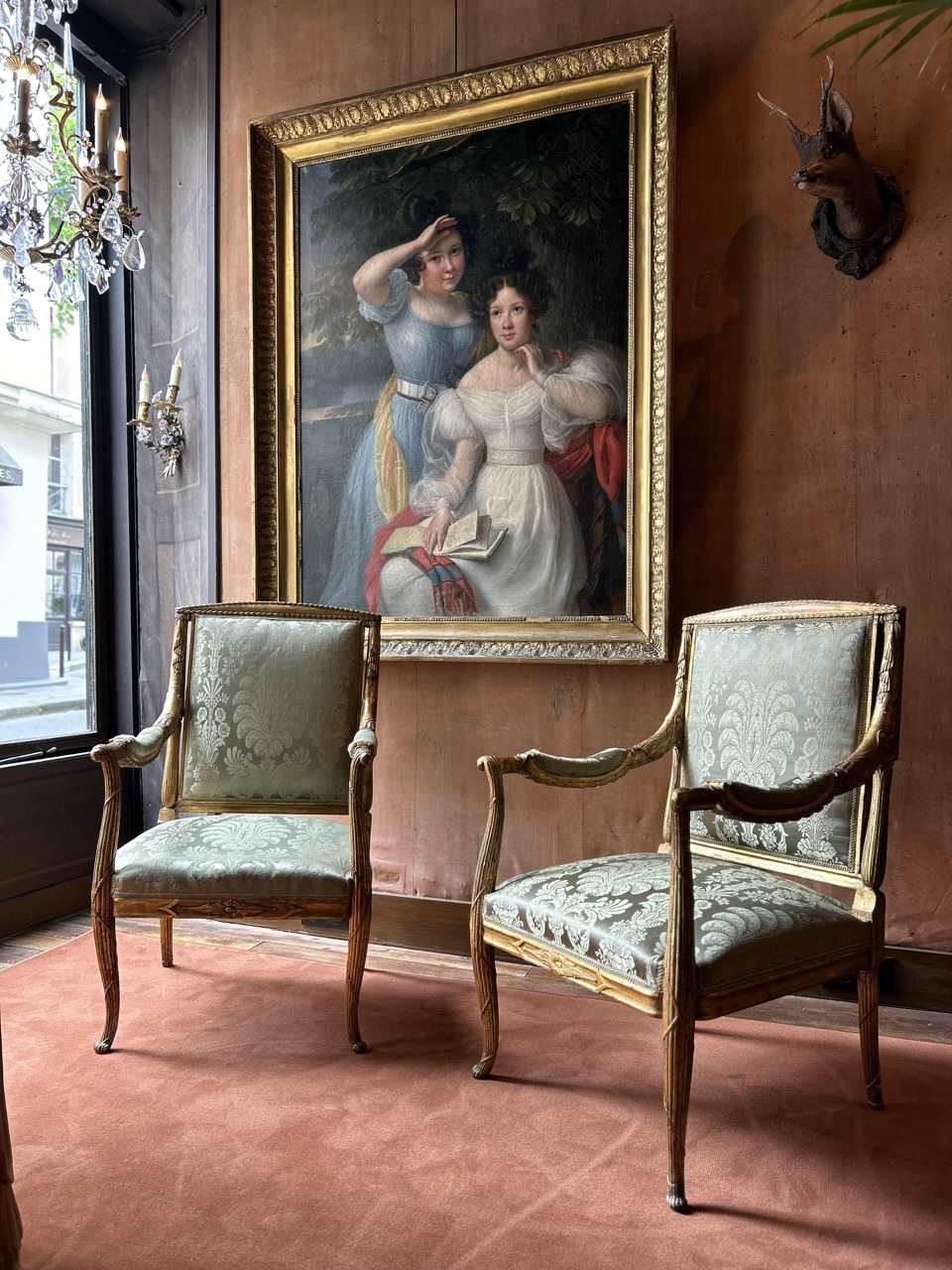Yvetot necklace with Holy Spirit in silver and vermeil with Rhine stones.
Normandy, France
Early 19th century
Yvetot necklace in silver and vermeil with Rhine stones, cross-shaped pendant.
Early 19th century
Normandy, France
“Nativity of the Virgin Mary” – wooden sculpture covered with polychrome stuck representing the “Virgin Mary Child” swaddled in an original embroidered cotton veil, sulphide eyes, daybed.
Early 19th century
Naples, Italy
“Portrait of a young woman”, oil on panel, inscription in Latin «aetatis 19»: at the age of 19, dated 1635, patinated wooden sculpted frame.
Dutch school
17th century
Oak wood with rosewood veneer powdered burl walnut table in Transition style from the family of flying furniture which moves quite easily around a room, lined inside with “Antoinette Poisson” wallpaper.
Around 1830
France
Chandelier with 8 lights, gilt bronze structure, pendants and daggers in rock crystal and amethysts.
19th century
France
Set of five painted canvases representing allegories of Love, Justice, Reason, Fidelity and Glory, original polychrome carved wooden frames.
Italy
Early 18th century
Oil on canvas “Family portrait”, 10 faces and as many stories to invent and reinvent.
XVIII century
Austria
Corner dresser with two bodies in polychrome carved wood opening on three doors to reveal shelves, a key.
Sweden
XVIII century
Pair of armchairs in gilded carved wood, upholstered in damask silk, wear and tear on the armrests.
Early 19th century
Lucca, Italy

